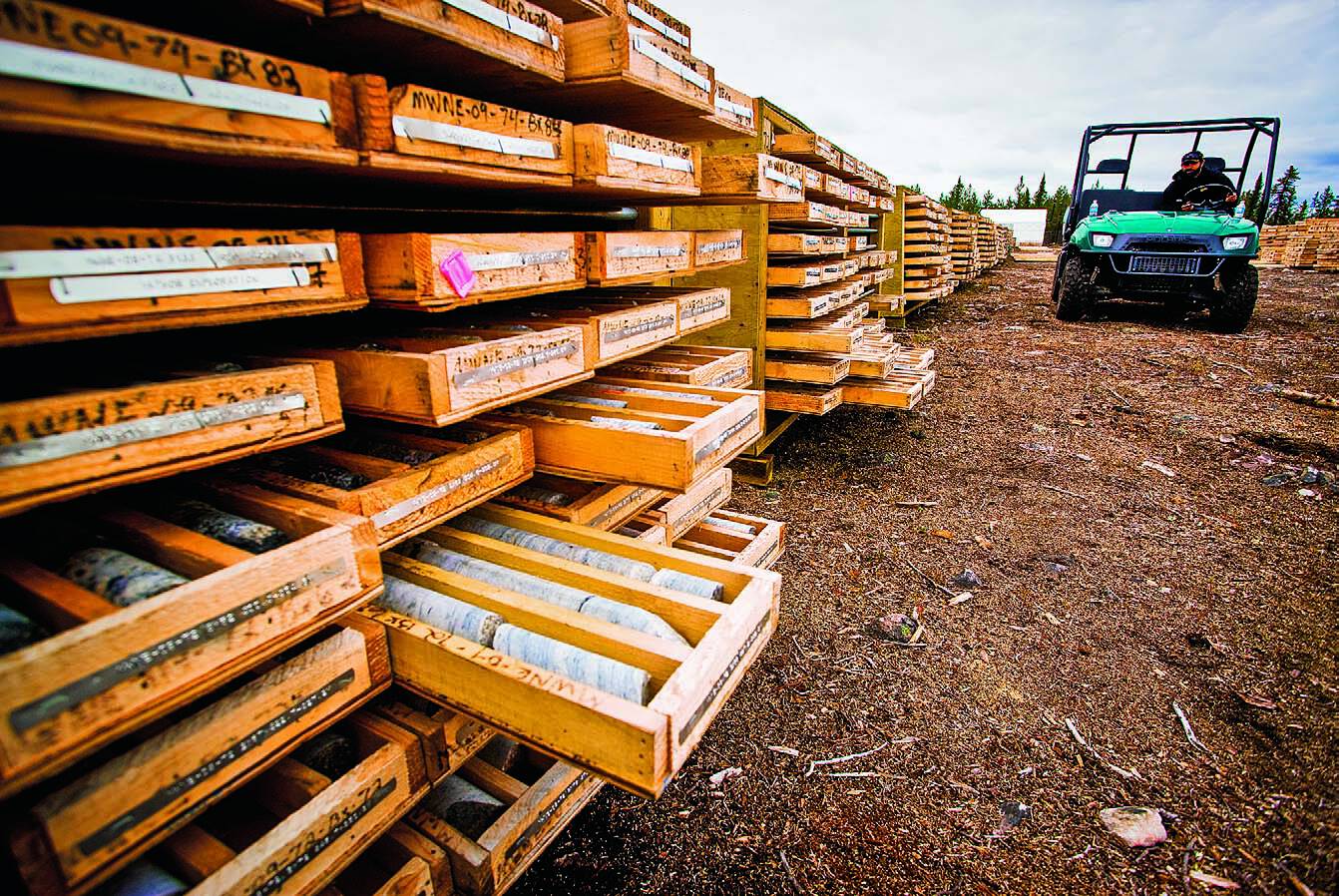
Chuck Downie, president and CEO of Athabasca Nuclear Corp. in Cranbrook, B.C., has worked in British Columbia for many years, but circumstances and opportunity combined to lead him to take on a uranium exploration project in the Athabasca Basin in northern Saskatchewan.
“We have a gold property in B.C., but it’s hard to finance gold projects now because the price of gold is down,” Downie says. “However, there’s some market interest in uranium, and since there is a moratorium on uranium exploration in B.C., we decided to focus our efforts on Saskatchewan.”
Downie says he is very familiar with the exploration scene in the Wheat Province. Through Eagle Plains Resources Ltd., the parent company of Athabasca Nuclear, Downie has been working there for years, and he says it’s an excellent jurisdiction for a B.C. junior to explore in.
“Recently, Saskatchewan went to map staking from ground staking, which makes it easier to acquire new properties,” he says. “And there’s an excellent geoscience database.”
Downie says Saskatchewan is very friendly to the mineral exploration and mining industries, too.
Saskatchewan Exploration Overview
Mineral exploration spending in Saskatchewan continues to be well above historic levels. In the past decade, over $2.7 billion has been spent on exploration and evaluation programs – a big increase over the total $674.5 million spent in the previous 20 years.
According to the latest figures compiled by the Saskatchewan Ministry of the Economy (fall 2013), expenditures on mineral exploration and evaluation projects in Saskatchewan totalled $324 million in 2012, topping the $293 million spent in 2011 and the $321 million spent in 2010.
According to preliminary estimates, mineral exploration companies plan to spend about $297 million in Saskatchewan in 2013. Although most of the spending will be on potash and uranium projects, the Ministry says there will also be significant expenditures on gold, base metal, diamond, coal, platinum group metals and rare earth element projects.
Tim McMillan, Saskatchewan’s minister responsible for energy and resources, says exploration will lead to new investments.
“And, it is to be hoped, to new producing mines,” he says.
The Ministry of the Economy says that, as of September 2013, the amount of Saskatchewan land under disposition for mineral exploration totalled 7.5 million hectares, which is 25 per cent higher than in September 2012. The increase is due mainly to staking around the recent discoveries of uranium at Patterson Lake South and of kimberlite north of Deschambault Lake. The Ministry says the increase was facilitated by Mineral Administration Registry Saskatchewan (MARS), the province’s new electronic registry for issuing mineral claims.
Since the introduction of MARS in late 2012, the area disposed for mineral exploration in Saskatchewan has increased by nearly 40 per cent. The Ministry estimates that, since MARS was put in place, the staking rate in the province has increased by a factor of five.
The 24/7 online system has reduced the approval time for claims from a minimum of 30 business days to only five (see sidebar on page 31). In addition to saving time, the new system has helped to reduce the cost of mineral exploration in Saskatchewan. MARS also provides province-wide electronic maps to locate and acquire claims, which eliminates staking costs and creates savings that can be redirected to field exploration.
Metallic and non-metallic minerals
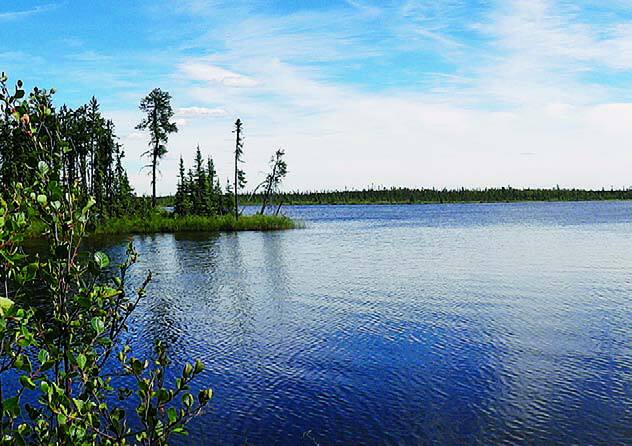
One of the reasons for the continued interest in mineral exploration in Saskatchewan is the province’s diverse geology, which hosts a variety of metallic and non-metallic mineral deposits. For example, in 2012 a total of $115.8 million was spent exploring for uranium, mostly in the Athabasca Basin. Spending is expected to increase slightly to $122.2 million in 2013.
The Athabasca Basin is located in northern Saskatchewan and Alberta. It is the world’s leading source of high-grade uranium and supplies about 20 per cent of global demand. The basin covers about 100,000 square kilometres in Saskatchewan and a small portion of Alberta.
Gold exploration expenditures in Saskatchewan totalled $13.1 million in 2012, up from $10.5 million in 2011, making it the highest annual total since 2007. Expenditures are expected to drop in 2013 to about $7.5 million, mainly due to recent declines in the price of gold.
Although there is currently no base metal production in Saskatchewan, it is estimated that $9.9 million will be spent on exploration in 2013, which is down from the $13 million spent in 2012. Saskatchewan’s most advanced diamond prospect is the Star–Orion South kimberlite project. According to a feasibility study for the project, 34.4 million carats, at an average value of US$242 per carat, could be extracted from the probable reserves of 279 million tons of kimberlite.
In 2013, North Arrow Minerals Inc. undertook a 2,002-metre diamond drilling campaign north of Deschambault Lake to earn a majority interest in the Pikoo project. North Arrow encountered Photo: [no caption] | Alpha Exploration Inc. kimberlite in nine of the 10 holes that it drilled, with reported intersections ranging from centimetre-scale dykes up to 28.9 metres.

B.C. Exploration Companies Operating in Saskatchewan
Following is a brief and incomplete summary of B.C. juniors that are exploring for minerals in Saskatchewan. Apologies to those deserving companies that, because of space limitations, have been omitted.
Base metals
In May 2013, Unity Energy Corp. completed an option agreement with an arm’s-length vendor, by which the company can earn 100 per cent interest in the Bory’s Lake property, which covers about 2,750 hectares in the southwestern edge of the La Ronge Gold Belt in Saskatchewan. The property has been explored and developed sporadically. Historic drilling defined the main zone as approximately 975 metres long and 5.3 metres to 19.5 metres wide, with drill indicated reserves of 1,336,500 tons grading 1.91 per cent combined zinc and lead.
Foran Mining Corporation has as its flagship project the McIlvenna Bay project, located in east-central Saskatchewan, 65 kilometres west of Flin Flon, Manitoba. Foran says McIlvenna Bay is one of the largest undeveloped VMS (volcanogenic massive sulphide) deposits in Canada, with indicated resources of 13.9 million tons grading 1.96 per cent copper equivalent and inferred resources of 11.3 million tons grading 2.01 per cent copper equivalent.
Coal
Goldsource Mines Inc.’s flagship Border property was the focus of a major coal discovery in 2008. It is located on the eastern edge of central Saskatchewan, about 50 kilometres north of the town of Hudson Bay.
The Border property is approximately 130,000 hectares in area. It is situated along the Durango Coal Trend, which continues to the southeast and northwest of the property. So far, 146 holes have been completed and drilling has identified 17 coal deposits. The coal, which is sub-bituminous thermal coal, is located approximately 80 metres below the surface, and has the potential to be mined by open pit methods.
Diamonds
North Arrow Minerals Inc. says it is building a portfolio of Canadian diamond projects from greenfields to the advanced stage. In Saskatchewan, North Arrow has the Pikoo project, which is located approximately 140 kilometres east of La Ronge. Pikoo consists of 33,374 hectares of contiguous mineral claims. As part of an option agreement with Stornoway Diamond Corporation, North Arrow has the right to earn an 80 per cent interest in Pikoo by completing an option work program consisting of 2,000 metres of diamond drilling, including a minimum of two drill holes at each of the North and South Pikoo areas. (The program was completed in July 2013.) North Arrow is awaiting diamond results from kimberlite intersections and will then provide notice to Stornoway of its intent to vest an 80 per cent interest in the project.
Gold
La Ronge Gold Corp. is focused on expanding gold resources in the La Ronge Gold Belt with the objective of becoming a gold producer. In late October 2013, the company filed an updated NI 43-101 technical report on its Preview SW property. Highlights of the report include indicated resources containing 158,300 ounces of gold grading 1.89 grams/ton gold and inferred resources containing 270,800 ounces of gold grading 1.48 grams/ton gold. Preliminary metallurgical test work indicates total gold recovery in concentrates ranged from 90 to 93 per cent.
Potash
Encanto Potash Corp. was created to work with First Nations in Saskatchewan in order to develop potash resources on their lands. Working with the Muskowekwan, Ochapowace and Chacachas First Nations, Encanto is exploring for potash on their southeastern Saskatchewan properties. These properties are joined by the Spar property, which is located on land owned by the Province of Saskatchewan.
Through the joint venture agreement with Muskowekwan Resources Ltd., Encanto has added to the project land package, which now totals approximately 58,300 acres. Encanto also has a 100 per cent interest in the 55,000-acre Ochapowace/Chacachas property and the 91,550-acre Spar property.
Uranium

In December 2013, Alpha Minerals Inc. and Fission Uranium Corp. closed on their arrangement to spin out some assets of Fission and approximately $3 million in cash to a newly incorporated company, Fission 3.0 Corp. The deal also included the acquisition of all common shares of Alpha by Fission and the spinning-out of all non-Patterson Lake South (PLS) assets previously held by Alpha and approximately $3 million in cash to a newly incorporated company, Alpha Exploration Inc. PLS is a new high-grade uranium discovery just outside the Athabasca Basin. The property consists of 17 mineral claims totalling 31,039 hectares.
Garrett Ainsworth, vice-president of exploration for Alpha Exploration Inc., says Fission bought out Alpha’s 50 per cent interest in the PLS property “because shareholders wanted consolidation of the PLS project before the start of the winter 2014 drill program.” Ainsworth says Alpha Exploration’s most prospective uranium project now is the Middle Lake project, which is located just east of the Cluff Lake Mine.
“Our property is 800 metres east of a mineralized zone with a historical non-43-101-compliant resource,” Ainsworth says. “We’ve found at least three high-grade uranium boulder and associated radon anomaly trains with the up-ice head located on our property.”
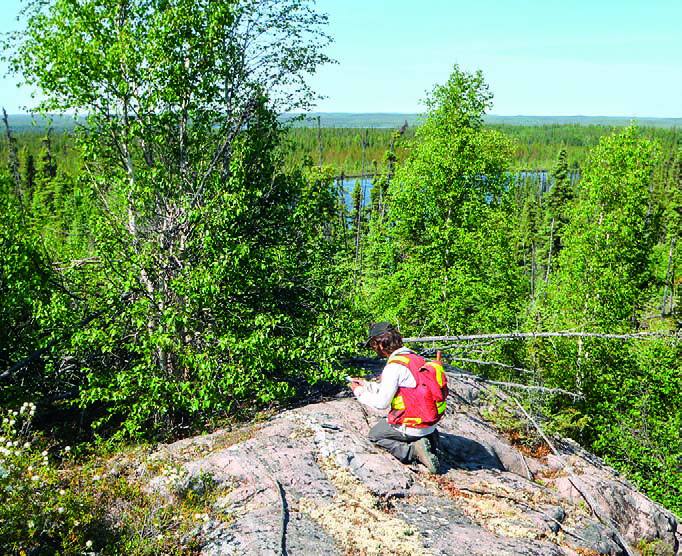
Ainsworth says historical and recent data that has been compiled at Middle Lake “shows an analogous scenario to the PLS project that led to a drill discovery in November 2012.” “We’re looking for the bedrock source on our property and expect to begin drilling in February 2014,” he says. “I believe the Middle Lake project has great potential to add value to the new company.”
In January 2014, Fission announced it had started a 90-hole winter drill and geophysical program at its PLS property. Drilling will focus on further delineating seven shallow depth zones and working to eliminate the gaps between the zones. The company says some of the drilling will test high-priority targets identified by geophysics and radon gas surveys.
In an announcement, Fission president, COO and chief geologist Ross McElroy said, “The tremendous success of PLS drilling to date has given us . . . a solid understanding of the project’s geology. While growing and connecting the zones is our principal aim, our work with radon and geophysics has given us a number of highly promising targets that we will begin testing.”
Anglo-Bomarc Mines Ltd. is involved in the Hughes Lake uranium exploration project, a joint venture that includes not only Anglo Bomarc, but also Cameco Corporation and Areva Resources Canada Inc. Cameco is the project operator. The property is situated in the eastern portion of the Athabasca Basin, approximately 30 kilometres southwest of the McArthur River uranium mine.
Athabasca Uranium Inc. has the 29,000-hectare Keefe Lake project on the eastern margin of the Athabasca Basin. The project is approximately 22 kilometres southeast of the McArthur River mine, the world’s largest high-grade uranium mine with proven and probable reserves of 335.5 million pounds U3O8 and an average reserve grade of over 15 per cent.
Preliminary interpretation of the project has identified a series of subtle northwest-trending conductive anomalies that lie within a wide magnetic low, between the Keefe Lake Alteration Zone and Cameco’s Harrigan Deposit.
CanAlaska Uranium Ltd. holds one of the largest land positions – up to 2.1 million acres – in the Athabasca Basin. More than $86 million has been spent exploring and identifying high-grade uranium targets, and many targets have been delineated.
CanAlaska’s main focus is on advancing the West McArthur and Cree East projects, which are located in the Eastern Athabasca basin, near existing mines and discoveries. They have each undergone over 15 years of assessment work and are significant assets for the company. Both exploration projects have advanced with the discovery of intensive uranium-related hydrothermal alteration zones within the claim areas. More than $35 million has been spent on exploring West McArthur and Cree East, and the properties show multiple targets with the potential for the discovery of new uranium deposits.
Forum Uranium Corp. is also exploring for uranium in the Athabasca Basin. In late November 2013, Forum announced the results of a lake sediment survey that had been completed recently in the southern part of its 100-per-cent-owned Clearwater project. (Clearwater is on trend and immediately to the southwest of the Alpha Minerals/Fission Uranium Patterson Lake South discovery.) Eleven samples were taken, with strong values ranging from 12 to 18 parts per million uranium found in a small lake bordering a magnetic high that has been interpreted to be part of the Clearwater intrusive complex.
As part of the upcoming 2014 winter program, the company is planning further lake sediment sampling, including additional radon surveys and targeted diamond drilling.
Long Harbour Exploration Corp. says geophysical programs confirm electromagnetic conductors that indicate the potential for a high-grade uranium discovery on its properties in the Athabasca Basin. The 2Z Lake property is 100-per-cent-owned by Long Harbour. It lies adjacent to Rio Tinto’s (formerly Hathor) Milliken Creek property and borders the Denison and UEX properties. The company says the N70E trending conductor located on the property suggests good potential for uranium mineralization, because the trend hosts several uranium deposits in the Athabasca Basin. The Madison property is located five kilometres northeast of 2Z. Madison is 100-per-cent-owned by Long Harbour and is located within a northeast trending belt that hosts major uranium deposits, including the latest discoveries of Roughrider, Millennium and Wheeler River.
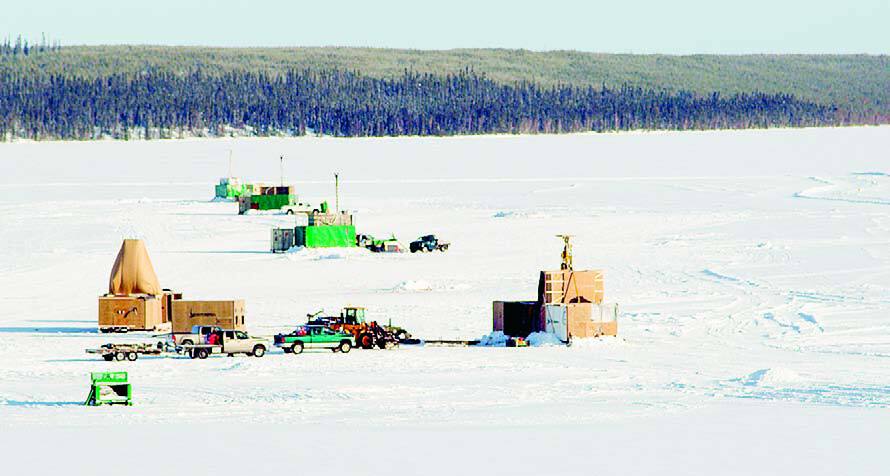
UEX Corporation is actively involved in 16 uranium projects in the Athabasca Basin totalling 264,363 hectares that are either 100 per cent owned or joint ventured. In late November 2013, UEX announced the final drilling results of its 2013 exploration program at the Shea Creek project. Shea Creek hosts the Kianna, Anne, Colette and 58B deposits, and is one of eight 49-per-cent-owned Western Athabasca projects that have been joint ventured with Areva Resources Canada Inc., the project operator. Two concurrent drilling programs were conducted during 2013. Newly reported drilling results for Shea Creek include indicated mineral resources of 2,067,900 tonnes grading 1.484 per cent U3O8 and containing 67,663,000 pounds U3O8; and inferred mineral resources of 1,272,200 tonnes grading 1.005 per cent U3O8 and containing 28,192,000 pounds U3O8.
In July 2013, the members of the Western Athabasca Syndicate entered into a formal agreement to carry out uranium exploration in the Athabasca Basin. Under the terms of the agreement, the members of the syndicate – Athabasca Nuclear, Skyharbour Resources, Noka Resources and Lucky Strike Resources – will explore and develop a 287,130-hectare uranium project base that, they say, will become the largest mineral claim position along the margin of the Western Athabasca Basin that is controlled by a single group.
The Western Athabasca Syndicate project is located in all directions near Alpha Minerals Inc. and Fission Uranium Corporation’s Patterson Lake South (PLS) uranium discovery, and is close to other uranium projects that are being advanced by several other regional exploration companies.
Chuck Downie, president and CEO of Athabasca Nuclear Corp., which is the project’s operator, says the syndicate is a way for companies to advance their uranium properties without diluting their stocks.
“The syndicate is committed to spending $6 million on the project over the next two years,” Downie says. “We’ve already spent $1.5 million on airborne surveys, prospecting and soil sampling. We have just started a winter program of ground-based gravity and radon sampling to define drill targets.”
In late November 2013, the syndicate announced results of the 2013 radon sampling program in search of drill targets at its Preston Lake uranium property. The 246,643-hectare Preston Lake property is the largest land package close to the PLS high-grade uranium discovery. The syndicate says many of the radon anomalies fall within prospective exploration corridors delineated by summer 2013 airborne geophysics and ground evaluation.
“We hope to start drilling on the property in March 2014,” Downie says.
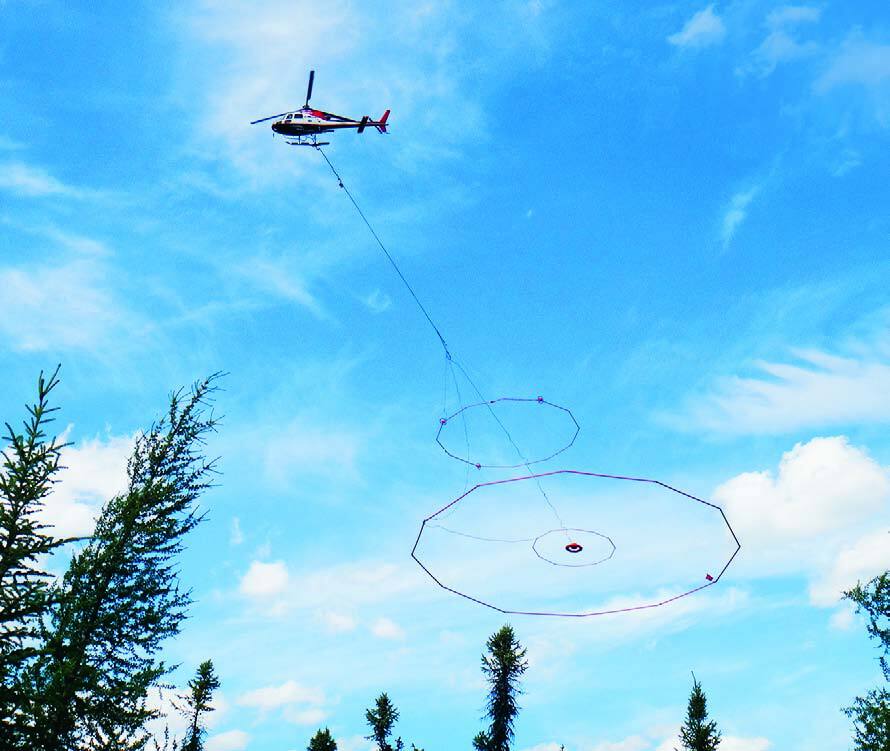
In late November 2013, Zadar Ventures Ltd. announced it had purchased a 100 per cent interest in the Stony Road uranium project. The project (10,545 hectares) is located on the eastern arm of the Cable Bay Shear Zone. The company says the zone has been identified as an Athabasca Basin regional structure on its nearby Pasfield Lake uranium project that is highly prospective for uranium mineralization. Historic exploration of the project includes regional geochemical sampling, airborne and ground electromagnetic/ gravity surveys, and diamond drilling.
